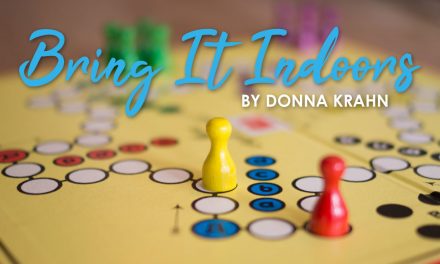“Step 1: Put the peanut butter on the bread,” read the student.
I promptly placed the jar of peanut butter on top of the loaf, squishing every bit of white Wonder® bread to an almost unrecognizable profile.
“Noooo… that’s not what we meant,” sighed the class, obviously put out by their teacher’s inadequacies.
“But that’s what you said to do,” I replied.
Explaining process essays was always one of my favorites: an opportunity to be impish—and get a point across.
Everywhere we go, there are instructions—a process. As parents, we direct our kids and as home school teachers, we give assignments. As adults, many of our tasks are intuitive. However, giving directions and helping our children learn how to follow them presents challenges. How do we help our children learn how to follow directions and complete tasks?
Articulate
Are your instructions well-defined, concrete, and achievable? I once gave my upper elementary student the all-encompassing task, “Go clean your room,” and hours later….
If you have written directions, have your child mark the key steps. With verbal directions, have them state the steps back in appropriate order, particularly if this is new or some of the steps have changed. With either type of direction, see if anything needs clarification. Your child may not be able to iterate what they don’t understand or what they feel they are unable to do. Their nonverbals can help pinpoint where to communicate more clearly. Note: there’s a fine line between clarifying and complaining. You’ll know where your child’s line is and help them see that line, too. Finally, does your child know when this task should be accomplished—specifically? Is this time frame realistically attainable?
Demonstrate
What does it look like to do this task correctly? You may have to show and tell each step. You may have to divide the task into smaller steps, depending on the task and the child’s ability. Your child may have to watch you, may have do the steps multiple times to accomplish each one well and then perhaps practice a lot so that the steps work well in conjunction with each other. As parents, we can forget that very few tasks are accomplished the first time we were told or shown how to do them. For example, after I’ve learned what all those words and steps in my cheesecake recipe mean, I may be able to follow the directions and get a worthwhile cheesecake. But, I won’t be able to make an edible dish from memory whenever I want without solid practice.
Evaluate
It’s helpful for kids to learn that tasks have to be evaluated. An appropriate (by age, ability, and task) evaluation helps them set goals and improve. For example, “if you’ve folded the bed corner like this, you’ve done it correctly.” If it doesn’t look correct, what do we need to do to meet that goal? Evaluation also helps them see how much their skills have improved: in consistency, speed, and automaticity.
Tips for Improving Our Directions
As parents, we’ll spend much time guiding our children in following directions. How can we help our children accomplish tasks?
- Put steps in order. Perhaps use identifiers like, “step 1, step 2…” so they know when they’ve done all the steps.
- Break tasks into easily remembered steps. For example, an acronym, HOMER, helps remember the scientific method steps: hypothesize; operationalize; measure; evaluate; and replicate.
- Write them down. We can consult these; we can control the speed that we process them. My friend taped written laundry instructions on her washer while children were learning that task.
- Have someone nearby. Then you’re available as the child is learning to remind and help if steps are forgotten, confused, or missed. This also allows opportunity for in-context directions and helps ensure the task gets done.
- Give feedback and encouragement. Doing so lets your students know how they’re doing on steps and the overall task.
Enjoy the journey as you help your children learn that following directions can truly be a joy! ~ Ruth





